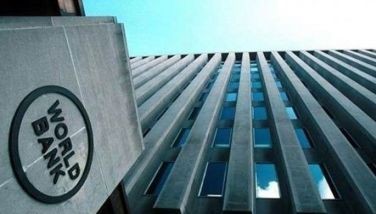Getting dream projects done

A big explanation why we are such a mess today is our government’s usual inability to execute good plans. And in the rare times we have successfully implemented a good idea, the next administration stops it because credit for success accrues to the previous administration.
In reaction to our column last Wednesday on using PPP for building schoolhouses, Louie Ferrer of Megawide told me that his company alone built 10,000 classrooms over two years. The scheme was Built Lease Transfer (after 10 years) under PNoy. The 10th year ended in October 2024. Private banks loved the project and have been asking them and DepEd to bring the scheme back. But Duterte stopped it. Sayang. It enabled the government to allocate what would have gone to school building funds to other programs including, sadly, congressional pork.
We do not need new plans. We only have to implement the plans already gathering dust in some bureaucrat’s cabinet. Or continue doing more of the rare successful projects like what Megawide did.
When I was taking graduate courses in economics at the then Center for Research and Communication, a speaker in one of my classes related the story of how a group of Filipinos on a trade mission to Thailand met with the Thai counterparts of our Board of Investment officials. Thailand was a hot destination for car manufacturers, among others and so the Pinoys asked the Thais what was the secret of their success.
The Thais reportedly answered that they studied our Investment Incentives program and did one thing we didn’t do: implement the good ideas.
The Vietnamese farmers taking advice from Filipino agriculture experts from UP Los Baños managed to make their country a major rice exporter. Dr. Leo Sebastian received the highest honor in Vietnam for helping boost their rice production. We are now Vietnam’s major rice buyers.
Our government’s inability to implement projects has been frustrating for Filipino professionals with world-class expertise.
Our family had our Christmas eve dinner in a restaurant along the Singapore River. Paulo Alcazaren, a Filipino urban planner and landscape architect with over 200 projects in 14 countries, was involved in the design of the riverbank development.
And the colorful bridge across the river was a project of the late Filipino artist Pacita Abad. During the last year of her life, while undergoing daily radiotherapy for her cancer, she completed a massive project of painting a bridge over Singapore River with 55 different colors and over 2,300 circles. The project was completed in seven weeks.
Alcazaren was also involved in designing that shopping promenade along Orchard Road. When he returned home, he designed the Iloilo River Promenade.
He is also helping design the beginnings of the Pasig River promenade. But I get the sense he is quite frustrated at the state of things here because it is so difficult to get good plans realized on the ground.
He wrote me an email in reaction to my column the other week on Singapore public housing.
“Great piece today on Singapore housing.
“I lived in Singapore for a dozen years (1990-2002). I stayed in HDB flats for the first five years, mostly in the same district (Brash Basah) where my office was located. I walked to work. The rest of my stay there, I lived in former government officials’ housing just off Beach Road. I never needed a car and maximized the use of the MRT, buses and taxis. Everywhere I needed to go was within a 20-30 minutes commute.
“I agree that the forced saving was key to enabling the provision of housing for the majority of Singaporeans. Later in my stay as I took my masters in urban design at the NUS, I learned about the country’s housing program in depth (our professors were from the HDB and URA). Our design exercises involved improving a number of housing districts, within the context of their DGP master plans (Development Guideline Plans), which were reviewed regularly.
“Design and planning were also key to the program’s success. The initial housing estates used just a limited number of model buildings. They were all mid-rise, up to 12 storeys and followed only a few templates for the floor plans, pre-cast panels and other rapid building innovations and structural designs. This ensured contractors could achieve economies of scale, since all estates in the first two decades or so used these standard designs…
“If the housing estates were farther away, transport systems and all utilities, schools, parks and recreational facilities, community shops and civic centers were all provided along with the housing units. This is a stark contrast to what we do here, providing only the very basic housing shells, with little by way of community amenities.
“In both Singapore and Hong Kong, the housing agencies also set up departments of sociology/social work. People’s needs and cultural adaptations were taken into account in the iterative process of improving the housing provided. In this regard, our DHSUD could take a cue. The United Architects of the Philippines, as well as academe, could all channel focused research on the real needs of Filipinos, so that the shelter provided addresses more than just protection from the sun and rain.
“The task is daunting for us in the Philippines… We would need to build five times what Singapore built for social housing in the last forty-five years by tomorrow, just to catch up! And since our population is still growing, we need to build even more.
“But it can be done. Politics just keep getting in the way along with systemic corruption in the public works process here.
“I have no answers beyond this.”
We have the technical brain power and we have the relevant studies but we are wasting all that plus the money of taxpayers that paid for those studies that were already completed but ignored.
Frustrating, indeed.
Boo Chanco’s email address is [email protected]. Follow him on X @boochanco.
- Latest
- Trending






















